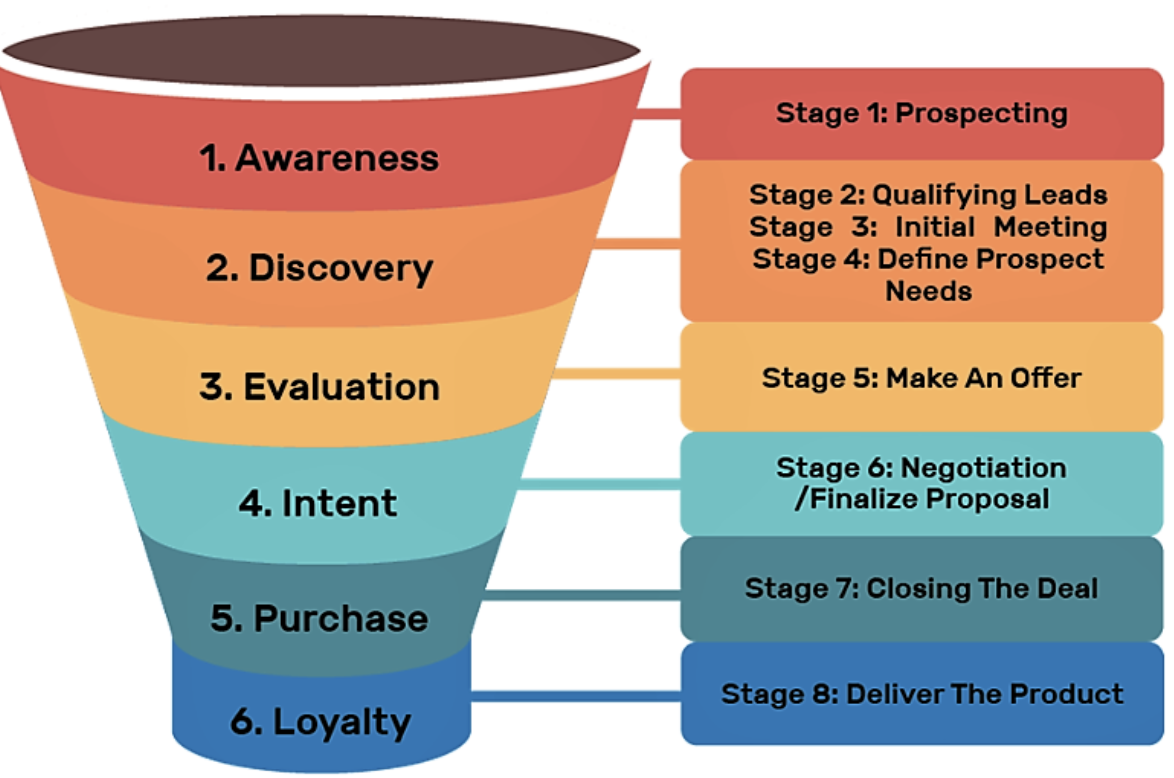The Audience to Community Funnel
If you have ever set foot near a marketing department you have probably heard the term, at least once if not many times, sales funnel. This is the concept of moving someone from being interested to actually purchasing a product, and it looks like some variation of this:
Marketers love trying to make a science out of the art of talking to people, and will use things like leads, lead scoring, lead generation, MQLs, SQLs, CPC, etc. etc. etc. to show you exactly where someone came from and where they are in their journey, and how likely they are to buy something. This is, of course, very important. But as a community builder I have largely ignored this jargon because what I care about is getting people into a community, making sure they’re engaged and feeling good about belonging to that community, interacting with others, and knowing that when all is working, everything else will naturally flow - including sales.
Alison James put it beautifully recently, “Building communities requires turning typical marketing funnels on their heads,” in a piece entitled, “Don’t Call it a Community.”
Builders know that it takes a lot of time and 1:1 relationship building to start a community. To do that, we focus on something like the Commitment Curve where we can plot the types of activities we want a user to take part in to be engaged:
The commitment curve assumes that someone is already an audience member. The topic of Audience vs. Community is often written about, with good reason. However when discussed, the articles take on the perspective that the two are at odds with each other. Marketers love to say things like “We have 1 million followers!” whereas a community builder will say something like, “We have 1,000 active members.” It’s subtle, but the devil is really in the details. To someone concerned with a funnel, numbers are everything, so having a large audience is hugely important to shake out a few buyers. To a community builder, seeing someone return again and again, share their experiences, and enjoy their relationship with other members is the most valuable. Not only are there sales, but there’s a higher quality of connection that yields so much more than just a sale.
The two are not enemies. Audience can exist without community, but there cannot be a community without audience. That being said, companies with communities demonstrate a 31% return on marketing investments, and address 85% more customer services issues through self-service, according to a whitepaper by The Aberdeen Group.
The question is, how does someone get a passive audience into an engaging community? I’ve come up with my own Audience to Community Funnel, defined by where the members are in their behaviors:
The Audience to Community Funnel by Jenn Pedde
There are quite a few ways to think about the community as a whole, including The Community Roundtable’s Community Maturity Model, which looks at the four stages of growth, as well as the building components such as the leader, content, governance, and policies. There’s the commitment curve I mentioned above, which I like to think of as points to be plotted based on the type of community that you have and the actions you want someone to take. The funnel on the other hand is a way to score yourself on how tightly connected your users are to each other. If your “community” is made up of 7,000 individuals with 0 connections, you have some work to do as this is still an audience. The benefits of a well networked community can’t be unlocked until your users engage with each other. For brands, the goal should be to move them from being just a follower on social media, to being a networked member of your community in order to unlock a group’s full potential.


